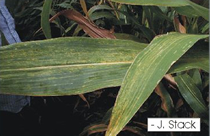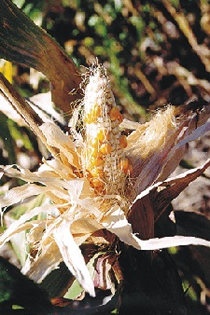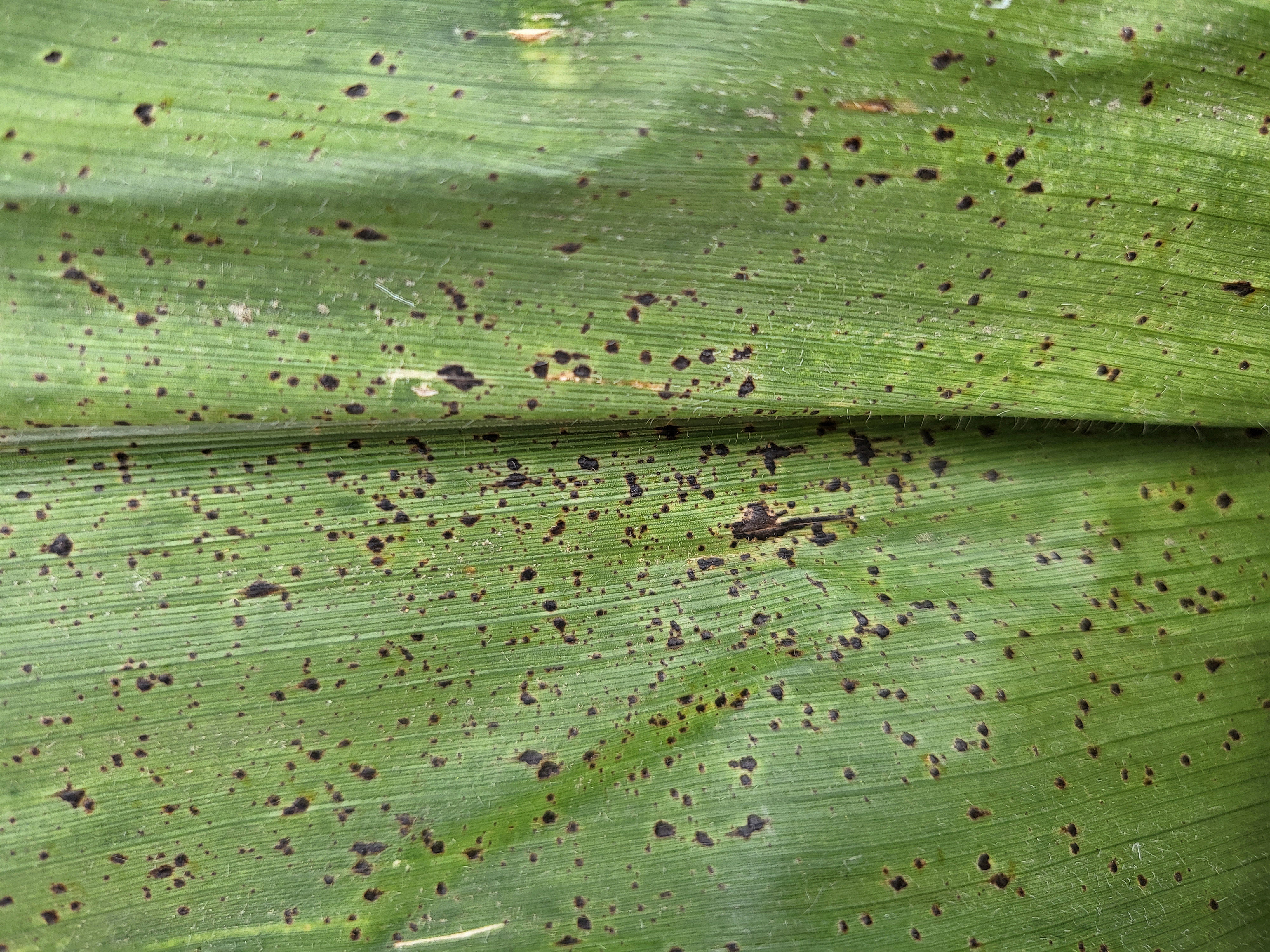Original content created by Dr. Jim Stack, former UNL Extension Plant Pathologist currently Kansas State University Extension Plant Pathologist. Content edited and approved by Dr. Tamra Jackson, UNL Extension Plant Pathologist.
Pathogen
Maize Chlorotic Mottle Virus (Sobemovirus). Virus structures: isometric single component particle containing single stranded RNA. The virus occurs in South Central Nebraska, North Central Kansas, and South America. How the pathogen survives and the primary source of inoculum is unknown. The virus is vectored by the larva and adult stages of certain beetles, including corn root worm.
Disease Symptoms
Hybrids and inbreds vary in susceptibility to MCMV. Early symptoms can be difficult to distinguish from nutritional deficiencies or corn genotype-environment interactions. As the disease progresses, leaf symptoms. Ears of severely affected hybrids yield poorly; kernel size and number are affected. Mixed infections of MCMV and Maize Dwarf Mosaic Virus or Wheat Streak Mosaic Virus can result in the disease Corn Lethal Necrosis become pronounced.






Favorable Environmental Conditions
High temperature and long periods of wet weather favor the leaf blight and top die-back phases.
High temperature and plant stress following pollination favor the stalk rot phase.
Management
Genetic Resistance
Tolerant hybrids are commercially available and are the best management option.
Cultural Practices
Tillage reduces the risk when the residue is incorporated into the soil and decomposition results. Crop rotation to another crop for one year reduces the incidence of MCMV in the next corn crop.








